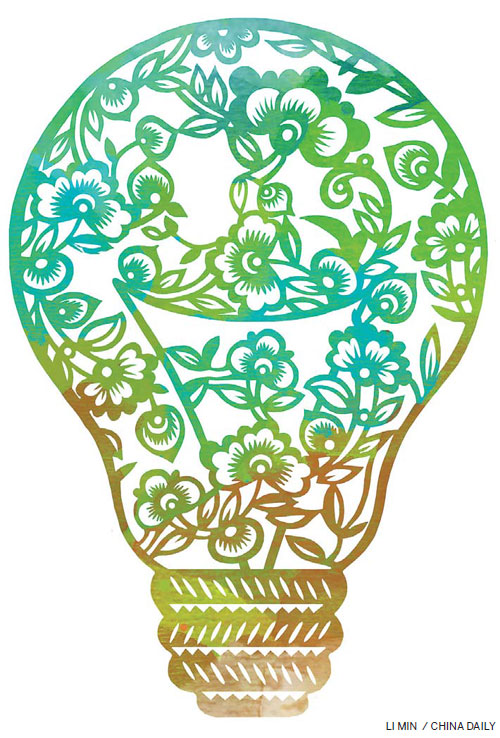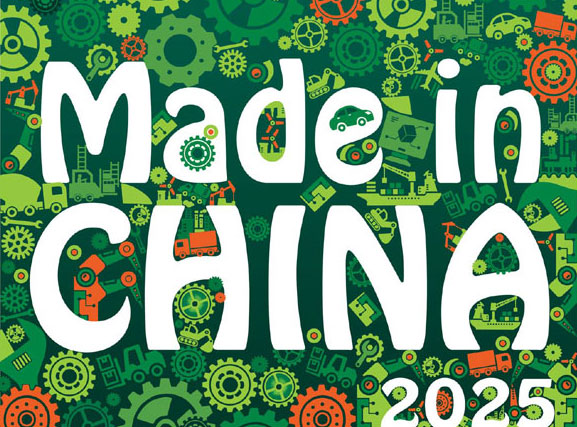Innovation picks up speed in China
Updated: 2016-01-01 08:16
By Peter Williamson(China Daily Europe)
|
|||||||||||
Country's real strength can be found in rapidly piloting, improving and scaling up new technologies
This is likely to be the year in which innovation takes over from infrastructure investment as the No 1 driver of China's growth. This is not only because China's 13th Five-Year Plan (2016-20) casts innovation in a central role. It is also because in recent years Chinese companies and research institutes have been steadily building formidable innovation capabilities that can now help them deliver a broad range of different types of innovations.
Many foreign observers have missed this trend because they wrongly equate innovation only with technological breakthroughs. The innovation that matters for economic growth is not just about Nobel-winning inventions. China is producing a number of leading-edge technologies including the world's fastest supercomputer and the pioneering Beidou Satellite Navigation System. But what really matters for economic success is the ability to commercialize innovations and rolling them efficiently in volume across global mass markets.

This is the real innovation strength Chinese organizations are developing: Capabilities in the processes of rapidly piloting, improving and scaling up new technologies, and developing complementary manufacturing methods to enable new products to be made efficiently. They have successfully re-engineered the innovation process to improve responsiveness, improvisation, flexibility, and speed. These capabilities will see the flow of a diverse range of innovations gather pace in 2016.
Chinese companies will bring products to market faster by accelerating proof of concept. Rather than relying on a small team working in a laboratory, for example, companies such as Wuxi AppTec completes projects between two and five times faster than comparable projects elsewhere in the world using conventional approaches. They achieve this by industrializing R&D: dividing the process into a series of steps, with dozens of people assigned to each step using abundant R&D workers (graduates of trade colleges), hundreds of thousands of whom are available for hire each year.
Traditional Chinese medicine has similar potential to benefit from such approaches, such as the depression treatment derived from ginseng developed by the Shanghai Innovative Research Center for Traditional Chinese Medicine that is now in phase-two clinical trials in the United States. Improved batteries for electric vehicles and storing intermittent renewable energy could be next.
Chinese companies will also deliver new streams of innovative products by pushing the boundaries of simultaneous engineering. Lenovo Group, which acquired IBM's personal computer business in 2005, has demonstrated how this can be achieved. IBM's new product development cycle was 12 to 18 months. Since then, Lenovo has managed to reduce the cycle in half by applying simultaneous engineering across the entire innovation process. For every project, team members work on different elements in parallel, under the supervision of one leader. Lenovo has overcome the usual problems of implementation by breaking down its product designs into separable modules linked by standardized interfaces; redesigning its software to be compatible across all activities associated with the new product; establishing short lines of communication where each team member can represent their respective functional department; and introducing open design processes where information is shared with the entire team as early as possible.

This approach to rapid innovation is supported by dense networks of manufacturing companies in cities such as Shenzhen that can now deliver hardware and product prototyping at a faster speed than anywhere else in the world. The result will be a stream of leadingedge products.
Despite the recent noticeable slowdown in China's economic growth, the booming Chinese consumer market will foster the ramping up of innovation in the years ahead. Consumer markets in China are particularly fluid and fast moving, with many first-time buyers and open-minded consumers. This will allow Chinese companies to rapidly move through successive cycles of "launch-test-improve" to drive down the learning curve, innovating products and processes and cutting costs as they go.
When Tencent launched the first version of the QQ Reminder application, it was geared toward appointments, birthdays and anniversaries. Users quickly pointed out a missing feature: reminders for when their favorite sporting events were about to begin. Tencent was also flooded by posts from gaming enthusiasts who wanted reminders about the schedules for computer-game tournaments. Within weeks the Tencent team released a new version that incorporated both functions.
This rapid cycle of "launch-test-improve" has now become core to Tencent's innovation process. Rather than nailing down a full-fledged product before launch, the Tencent development team routinely launches ready-to-use new platforms with limited functionality and harnesses user feedback to improve the final product. To achieve this, the company created channels to encourage user feedback, rapidly communicate this to the R&D team, and ensure the product architecture and design process is sufficiently flexible to incorporate new functionality quickly. In January 2015 it launched Webank, the country's first online-only bank that has since added personal loans and investment products available through its WeChat and QQ social media apps.
Expect more of these types of innovations: A recent study by KPMG found that seven of the world's most successful 50 financial technology applications in the last year came from China, including ZhongAn, the insurance group with an innovative online business model backed by Alibaba.
Also be prepared for innovations in China to go from launch to massive scale in lightning speed. Chinese companies might not always invest in a new idea, but they are good at getting innovations through the scale-up phase "from 1 to 100,000". Few would have expected Da-Jiang Innovations, launched in 2006, to become a leading player in the fast-emerging drone industry, with revenues currently estimated at $1 billion. Its ability to rapidly scale up the production of new designs is helped by the huge and highly responsive local supply network it has developed in China (in 2000 imported parts accounted for nearly 55 percent of goods exported by China; now 70 percent are supplied locally). DJI's founder, Andy Pan, summed up its strengths in scaling up innovative products this way: "Our giant defense company competitors are technologically advanced, but they take five to six years to scale up supply of a new model whereas we take five to six months." Chinese companies are thinking big when it comes to scaling up innovations: BoyaLife, the biotechnology company, announced recently that it was investing in capacity to clone 1 million beef cattle a year from their hair cells.
Chinese companies will also look to innovate their organizational structures and processes. Haier Chairman Zhang Ruimin, for example, has decided to divide the company into a set of "entrepreneurial platforms", each focused on different consumer needs such as the "diet ecosystem" or the "atmosphere ecosystem" supplied by hundreds of micro enterprises that compete to innovate, build and distribute products to serve changing customer needs.
Of course not all these innovations will succeed. There are more than 1,500 financial technology platforms currently vying for customers in China, for example, but almost 400 failed in 2014. And many of the innovations to be launched in China in 2016 will be the result of cooperation between Western and Chinese firms. UK's AstraZeneca, which already works with Wuxi AppTec to turn new molecules into innovative biological medicines, announced recently that it was deepening this alliance. UK-based Powa Technologies, which has developed a smartphone app that enables people to buy a product by taking a photograph of it with their phone, signed a joint venture in December with China UnionPay to roll out its new technology across China.
Whether the initial inventions come from China or abroad, however, expect 2016 to see a flood of innovations coming to market in China, setting off a renewed cycle of rapid learning and improvement, and for the successful ones to reach massive scale at surprising speed.
The author is professor of International Management at Cambridge University's Judge Business School. The views do not necessarily reflect those of China Daily.
( China Daily European Weekly 01/01/2016 page10)
Today's Top News
Storm Frank batters northern Britain
Over 1 million refugees fled to Europe by sea in 2015
Germany to spend 17b euros on refugees in 2016
Demand booms for high-end financial talent
Abe expresses apology for Korean victims of comfort women
North China encounters gas supply shortage
Asian Infrastructure Investment Bank launched
Russia says it has proof of Turkey's support for IS
Hot Topics
Lunar probe , China growth forecasts, Emission rules get tougher, China seen through 'colored lens', International board,
Editor's Picks

|

|

|

|

|

|






